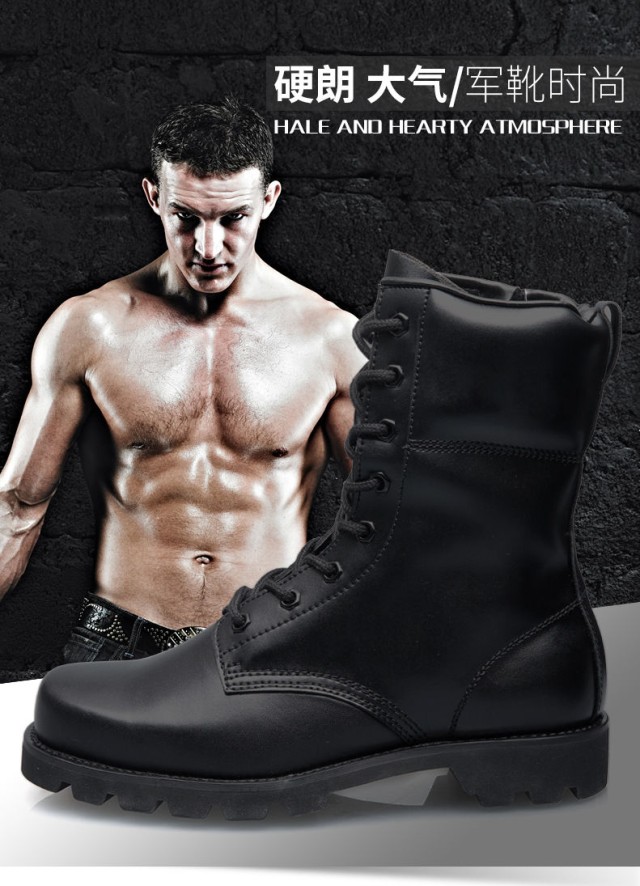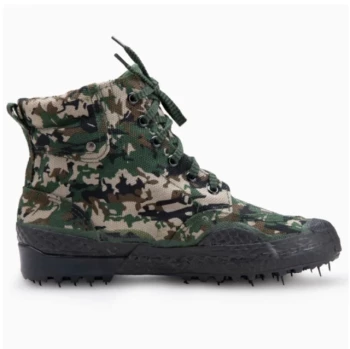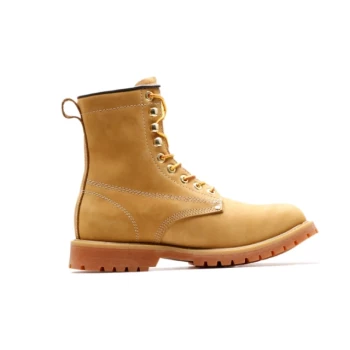Camouflage in military boots isn't just about aesthetics—it's a carefully engineered solution for concealment, durability, and mission success. From adaptive pattern technologies to material innovations, here's how modern designs blend science with tactical requirements.
Functional Concealment in Tactical Environments
Science of Camouflage: Pattern Types and Environmental Adaptation
Camouflage patterns disrupt the human silhouette by mimicking natural textures like foliage, sand, or snow. Modern designs use:
- Disruptive coloration: High-contrast shapes to break up outlines (e.g., Multicam for varied terrains).
- Micro-patterns: Smaller details to avoid detection at close range.
- IR-resistant dyes: Reduce visibility under night-vision optics.
Research shows that environment-specific patterns (e.g., woodland vs. desert) improve concealment by over 40% compared to generic designs.
Material Innovations for Durability and Stealth
Tactical boots prioritize materials that retain prints while enduring harsh conditions:
- Neoprene laminated with camo fabric: Lightweight and flexible, ideal for dynamic movement.
- Vulcanized rubber wraps: Enhance waterproofing and resist scuffing, critical for muddy or rocky terrains.
- Reinforced uppers: Full-grain leather and ballistic nylon balance camouflage retention with tear resistance.
Did you know? Some advanced boots incorporate "self-cleaning" rubber soles to prevent mud buildup—a subtle but critical feature for maintaining stealth.
Aesthetic and Cultural Significance
Balancing Rugged Style with Tactical Requirements
While functionality drives design, aesthetics influence adoption:
- Neutral tones (e.g., coyote brown): Transition seamlessly between civilian and military use.
- Matte finishes: Reduce light reflection, a practical feature that also aligns with tactical "low-profile" trends.
Case studies reveal that units allowed to customize boot patterns report higher morale, proving psychological benefits matter as much as physical concealment.
Brand Identity and Consumer Perception in Tactical Gear
For distributors and brands, camouflage signals professionalism:
- Consumer demand: Hunters and outdoor enthusiasts often prefer military-grade patterns for perceived authenticity.
- Brand differentiation: Unique camo designs (e.g., digital urban patterns) cater to niche markets like law enforcement.
A survey of tactical gear buyers found that 60% associate specific camouflage styles with reliability, influencing bulk purchasing decisions.
Why It Matters for Your Business
For distributors and brand owners, partnering with a manufacturer like 3515 ensures access to:
- Customizable patterns: Adapt to regional terrains or branding needs.
- Proven materials: Cordura, vulcanized rubber, and IR-resistant treatments for performance you can market with confidence.
Ready to elevate your tactical footwear line? 3515’s expertise in durable, mission-ready designs helps you meet the demands of bulk buyers who prioritize both function and brand appeal.
Note: All data points are approximate and based on industry research.
Products You Might Be Looking For:
View tactical military boots with mixed-material design
Related Products
- Durable Spiked Camouflage Boots Wholesale & Factory Production
- Wholesale Durable 6-Inch Work Boots | Custom & Private Label Manufacturer
- Durable Leather Work Boots Wholesale Manufacturer & Custom Factory
- Durable Goodyear Welt Leather Work Boots for Wholesale & Private Label
- Wholesale Slip-On Safety Boots Manufacturer - Custom Puncture-Proof & Steel Toe
Related Articles
- How Vulcanized Rubber Powers High-Performance Applications Across Industries
- Why Vulcanized Shoes Dominate Durability and Comfort: A Technical and Practical Guide
- How to Choose Between Vulcanized and Cupsole Skate Shoes for Optimal Performance
- How Vulcanized Skate Shoes Enhance Performance for Technical Skaters
- Optimizing Vamp Production for Vulcanized Shoes: Materials, Techniques, and Quality Assurance
















